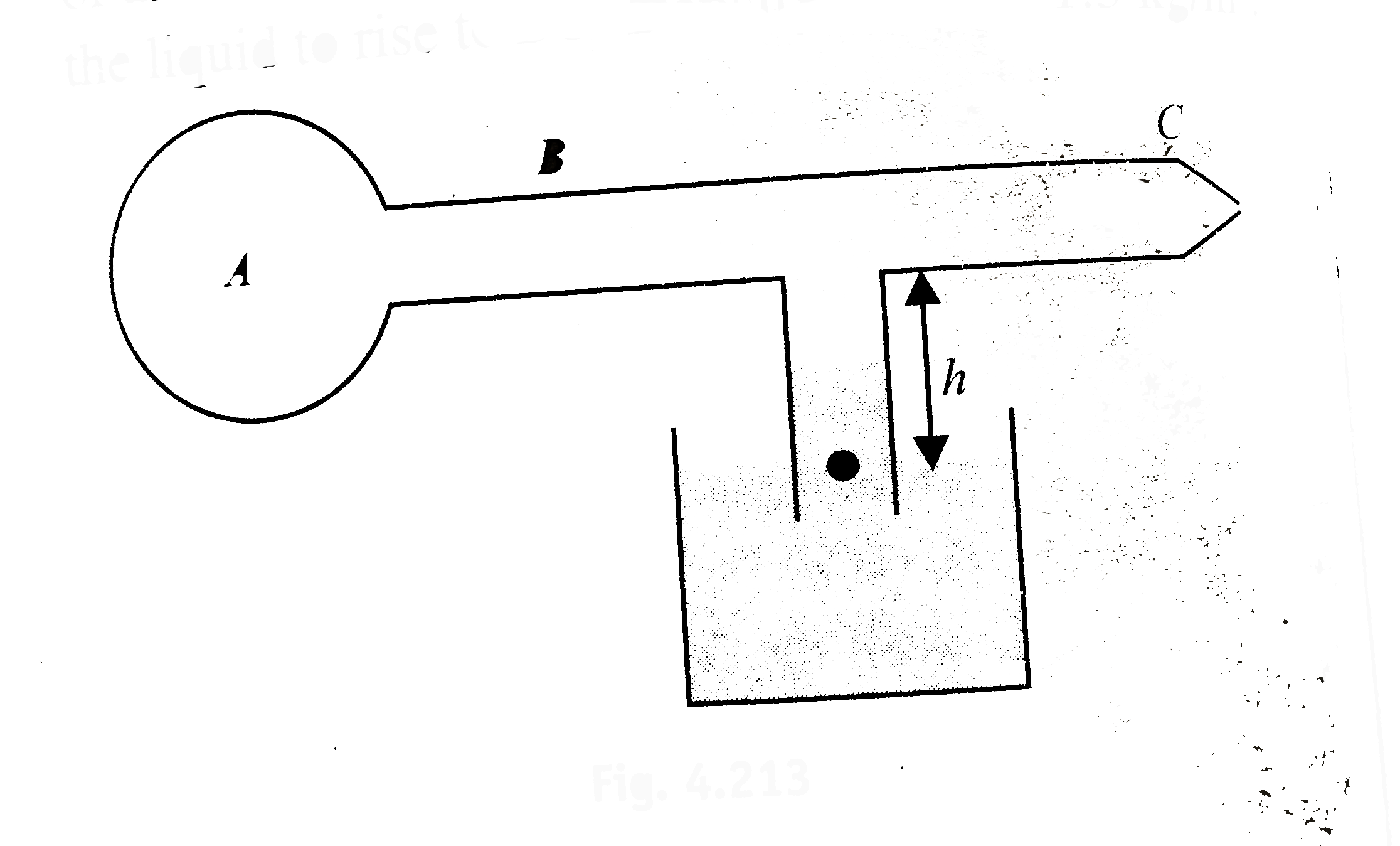During blood transfusion the needle is inserted in a vein where the gauge pressure is 2000Pa . At what height must the blood container be placed so that blood may just enter the vein? Density of whole blood = 1.06×103Kg/m3.
h=P/ρg=200/(1.06×103×9.8)=0.1925m
The blood may just enter the vein if the height at which the gblood container be kept must be slightly greater than 0.1925m i.e., 0.2m.
Topper's Solved these Questions
- MECHANICAL PROPERTIES OF FLUIDSBOOK - NCERT ENGLISHCHAPTER - MECHANICAL PROPERTIES OF FLUIDSEXERCISE - EXERCISE
31 Videos
- LAWS OF MOTION BOOK - NCERT ENGLISHCHAPTER - LAWS OF MOTION EXERCISE - EXERCISE
40 Videos
- MECHANICAL PROPERTIES OF SOLIDSBOOK - NCERT ENGLISHCHAPTER - MECHANICAL PROPERTIES OF SOLIDSEXERCISE - EXERCISE
21 Videos
Similar Questions
The flow of blood in a large artery of an anaeshetized dog is diverted through a venturimeter. The wider part of the meter has a cross sectional area equal to that of the artery i.e. 8mm2. The narrower parts has an are 4mm2. The pressure dorp in the artery is 24Pa. what is the speed of the blood in the artery ? Given that density of the blood = 1.06×103kg/m3
View SolutionIf the water emerge from an orifice in a tank in which the gauge pressure is 4×105Nm−2 before the flow starts, then what will be the velocity of the water emerging out ? Take density of water is 1000kgm−3
View SolutionFigure shows a crude type of atomizer. is compressed, air flows swiftly through tube BC causing a reduced pressure in the particles of the vertical to Liquid rises in the tube, enters BC and is sprayed out. if the pressure in the bulb is Pa+P, where P is the gauge pressure and Pa is the atmospheric pressure, v is the speed of air in BC, find how large would v need to be to cause the liquid to rise to BC. Density of air =1.3kg/m3.

View Solution(a) What is the largest average velocity of blood flow in an artery of radius 2×10−3m if the flow must remian laminar?
(b) What is the corresponding flow rate? Take viscosity of blood to be 2.084×10−3Pa−s. Density of blood is 1.06×103kg/m3.
View SolutionTwo narrow bores of diameters 3.0mm and 6.0 mm are joined together to form a U-shaped tube open at both ends. If th U-tube contains water, what is the difference in its levels in the two limbs of the tube? Surface tension of water at the temperature of the experiment is 7.3×10−2Nm−1. Take the angle of contact to be zero. and density of water to be 1.0×103kg/m3.
(g=9.8ms−2)
View SolutionTwo narrow bores of diameters 3.0mm and 6.0 mm are joined together to form a U-shaped tube open at both ends. If th U-tube contains water, what is the difference in its levels in the two limbs of the tube? Surface tension of water at the temperature of the experiment is 7.3×10−2Nm−1. Take the angle of contact to be zero. and density of water to be 1.0×103kg/m3.
(g=9.8ms−2)
View SolutionThe average human heart forces four litre of blood per minute through arteries a pressure of 125 mm. If the density of blood is 1.03×103kg/m3 then the power of heart is :
View SolutionWhat is the pressure drop (in mm Hg) in the blood as it passes through a capillary 1mm long and 2μm in radius if the speed of the blood through the centre of the capillary is 0.66mms? (The viscosity of whole blood is 4×10−3PI)
View SolutionA square plate of side 10 m is placed horizontally 1 m below the surface of water. The atmospheric pressure is 1.013×105Nm−2. Calculate the total thrust on the plate.
(Density of water ρ=103kgm−3,g=9.8ms−2)
View SolutionA cylinder of volume 10m3 contains hydrogen gas at 300 K. What is the quantity of heat required to raise the temperature of the gas to 303 K? Using this energy a body of mass m can be lifted to a height of 10 m. What is the body ? Density of hydrogen is 8.9×10−2Kg/m2−Cv=20.4Jmol−1K−1.
View Solution
